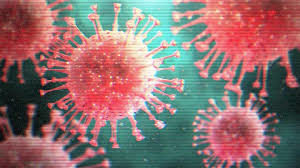The 9 most significant unanswered inquiries regarding Covid-19
Is reinfection conceivable? Will it be regular? How common is it truly? These are a portion of the top inquiries on analysts’ brains.
It’s anything but difficult to overlook that only a couple of months prior, the infection that is causing the Covid-19 pandemic around the globe was not known, by any means, to science.
In the months and weeks since, scientists have been learning as much as they can about this pathogen — and dangerously fast.
Researchers have sequenced its genome and started to make immunizations in the expectation of making individuals invulnerable to it.

They’ve additionally learned, basically, that individuals can give the infection to others before they get indications themselves. That makes the infection difficult to contain. Yet, it additionally clarifies that serious activities — like the social removing measures set up in the US and around the globe — are vital in the battle to spare lives.
We despite everything don’t have the foggiest idea how this pandemic will play out.
That is in enormous part on the grounds that there are urgent unanswered inquiries concerning this infection and the illness it causes.
For instance, analysts don’t yet have exact evaluations of how savage the infection is or a definite comprehension of how it spreads
. The responses to these inquiries will give key experiences into halting this pandemic at all troublesome way that could be available.
Related
Researchers caution we may need to live with social separating for a year or more
It might be too simple to even think about looking at these vulnerabilities and the absence of information and feel carefree: Perhaps this all isn’t as terrible as individuals are stating.
Try not to breathe easy because of these vulnerabilities. Take alert.
“The manner in which we manage the vulnerability is we need to consider every contingency,” Diminish Hotez, the dignitary of the National School of Tropical Medication at Baylor School. “In twelve months we’ll understand a portion of the things that we did might not have been essential.” However we need to continue with extraordinary watchfulness because of the numerous questions of this infection and the genuine hazard it postures to such a large number of around the world.

These are the nine most significant unanswered inquiries concerning Covid-19 that will help decide the course of this flare-up. Be lowered by this rundown. We are. Also, fare thee well.
1) How, precisely, does Covid-19 spread?
The infection — known as SARS-CoV-2 — that causes Covid-19 has tainted in excess of 222,000 individuals since its development. (Of them, at any rate 9,000 have passed on.) That is only the affirmed cases. A large number of more may have happened (more on that later).
Why has it spread so quick?
“The best clarification for this fast spread is that the infection is being gone through beads from hacking or sniffling,” Vox’s Julia Belluz clarifies. “At the point when these infection loaded beads from a tainted individual arrive at the nose, eyes, or mouth of another, they can transmit the sickness.”
Be that as it may, it’s as yet obscure how noteworthy different methods of transmission are in spreading the illness.
Hand-washing guidelines posted in a bathroom on Legislative hall Slope in Washington, DC, on Walk 19, 2020. Alex Wong/Getty Pictures
It’s conceivable that the infection can spread through excrement. (The CDC says, however, “the hazard is relied upon to be low founded on information from past flare-ups of related coronaviruses.” Yet on the off chance that you weren’t at that point washing your hands energetically in the wake of crapping, kindly do so now.).
There are likewise vulnerabilities over to what extent the infection can wait noticeable all around after an individual hacks or wheezes.
You may have heard that the new coronavirus isn’t “airborne” — implying that dissimilar to incredibly infectious maladies like measles, it’s probably not going to wait noticeable all around for quite a long time. However, that doesn’t mean the infection can’t wait noticeable all around for some measure of time.
As Wired clarifies, albeit a few specialists state the new coronavirus isn’t airborne, that depends on a restricted logical meaning of the term.

The infection can even now wait noticeable all around for quite a while and under certain conditions. As the diary Detail reports, we don’t yet know decisively what those conditions are.
It will be noticeable all around at the times after a tainted individual sniffles or hacks, yet it’s hazy when the particles in the long run stop on the ground (or encompassing surfaces).
“The investigations proposing that [the virus] can be aerosolized [i.e., wait as little particles in the air] are just primer, and other research negates it, finding no aerosolized coronavirus particles in the emergency clinic rooms of Covid-19 patients,” Detail reports. More research is required.
So each of the three transmission courses — beads, airborne, and fecal — are as yet potential supporters of the spread of the infection.
“In all likelihood, one of these is most likely the transcendent one, and the others may be minor methods of transmission, however we don’t generally get this,” Hotez says. Some uplifting news is that researchers are making sense of to what extent the infection can live on certain surfaces.
Here’s the most recent: It’s around three days for plastic and steel, about a day for cardboard, and not exactly a day for copper.
This data guides sanitation endeavors to where they are required most.
The CDC and the WHO prescribe a few fundamental measures to help forestall the spread of Covid-19:
- Wash your hands regularly for at any rate 20 seconds.
- Cover your hack or wheeze with a tissue, at that point toss the tissue in the garbage.
- Clean and purify every now and again contacted objects.
- Stay home when you are wiped out.
- Contact a wellbeing specialist on the off chance that you have manifestations; fever and a dry hack are generally normal.
- DON’T contact your face.
- DON’T travel on the off chance that you have a fever and hack.
- DON’T wear a face veil on the off chance that you are well.
Direction may change. Remain educated, and remain safe, with Vox’s manual for Covid-19.

2) Can individuals become reinfected? Furthermore, assuming this is the case, after to what extent?
Another immense obscure: Can individuals become reinfected with Covid-19 after they’ve had it? There are a few reports of individuals in China and Japan testing positive subsequent to recuperating from the disease.
However, all things considered, it’s obscure whether those individuals were really reinfected or still simply had low degrees of the infection in their frameworks after they felt much improved.
“I would state that the greatest obscure is the means by which powerful is the insusceptible reaction created in a tainted individual,” Akiko Iwasaki, an immunobiologist at the Yale Institute of Medication, writes in an email. “To what extent would [immune] insurance last? … The responses to these inquiries are critical to understanding whether crowd invulnerability is viable.”
Crowd resistance is when enough individuals have gotten the infection and become safe that its spread can be eased back and conceivably halted.
On the off chance that reinfection is conceivable, in any case, crowd insusceptibility may not be a choice.
(Additionally, halting the infection by means of crowd resistance isn’t a perfect situation. It would initially mean heaps of diseases and conceivably a large number of passings.)
At this moment, there’s restricted research on the subject of reinfection in people.
It’s simply too soon. Angela Rasmussen, a virologist at Columbia College, focuses to a confident, assuming little, concentrate in Macaque monkeys.
The monkeys had been contaminated with the infection and afterward, after they showed signs of improvement, presented again to the infection.
Uplifting news: They didn’t get reinfected. The examination, Rasmussen says, “looks good for antibody improvement, since that proposes the infection — or viral proteins — can inspire an invulnerable reaction,” and shield monkeys in any event from reinfection.
The last gathering of patients leave a recreation center turned impermanent medical clinic in Wuhan, China, on Walk 10, 2020. Costfoto/Barcroft Media by means of Getty Pictures
A lady who recuperated from the coronavirus embraces a clinical staff part before leaving a transitory emergency clinic in Wuhan, China, on Walk 10, 2020. Stringer/AFP by means of Getty Pictures
Studies on people will come in time. Scientists will have the option to test the blood of individuals who have recuperated from Covid-19 in the many months following their contamination and check whether they despite everything are invulnerable.

In any case, regardless of whether individuals do get invulnerable, “one thing we don’t think about that despite everything is to what extent that resistance would last,” Rasmussen says. “Furthermore, that is lamentably not something we can decide until we hold up months or years later on, and test again and check whether those antibodies are still there.”
For coronaviruses that cause the normal cold (in a similar group of infections as the one that causes Covid-19), she says, reinfection is conceivable, yet on a timescale of years, not weeks or months. Once more, we will need to sit back and watch if this likewise applies to Covid-19.
For the time being, in any event, Rasmussen says, “I have not seen any information that is persuading that reinfection happens.”
3) What number of instances of Covid-19 are in the US, and where are we on the bend?
This is perhaps the most alarming obscure. Because of the proceeded with absence of Covid-19 symptomatic testing in a large portion of the US, we simply don’t have the foggiest idea what number of cases are in the US.
“There’s theory that there might be numerous gentle contaminations who aren’t looking for care — or, regardless of whether they are, can’t be tried because of deficient testing limit,” says Harvard disease transmission specialist Maimuna Majumder. This muddles our insight into where the infection is, and what number of helpless individuals might be in its way.
As of Walk 19, the CDC said there were 10,442 affirmed instances of Covid-19 in the US. In any case, viral hereditary information proposes the genuine number could be a lot higher. Here is one gauge from a computational virologist at Fred Hutchinson Malignant growth Exploration Center in Seattle (with an extremely wide range) from almost seven days prior.
Do Follow Us On : Instagram, Facebook, Twitter.







